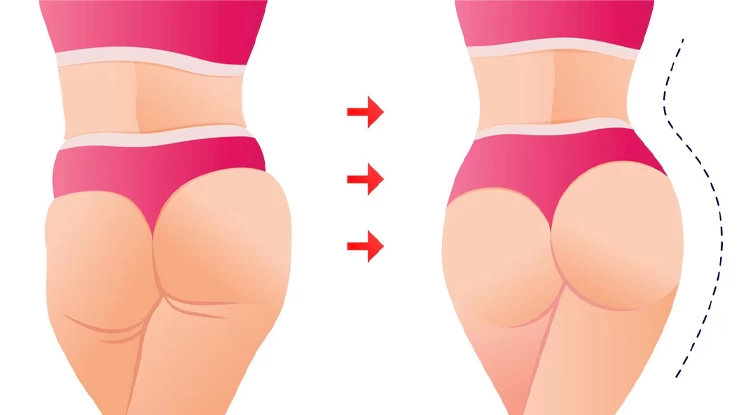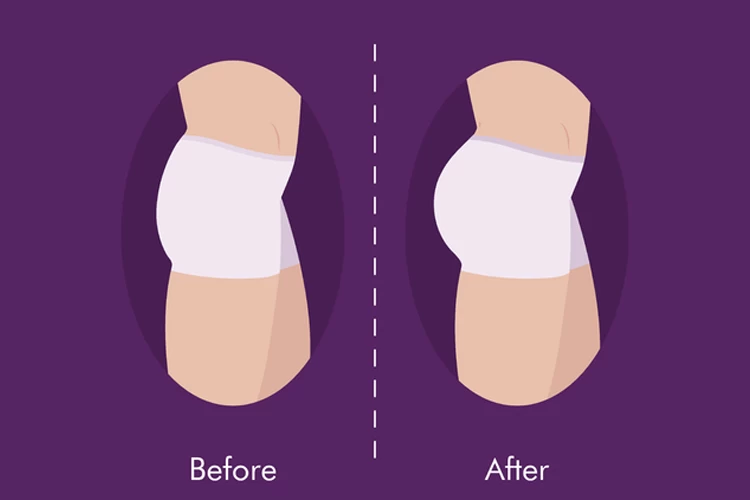During a BBL revision, the surgeon may need to perform additional liposuction to remove excess fat or perform fat grafting to enhance and reshape the buttocks. The goal of the revision is to achieve the desired aesthetic outcome and improve overall satisfaction with the appearance of the buttocks. Recovery from a BBL revision typically involves wearing compression garments, avoiding sitting directly on the buttocks, and following post-operative care instructions to ensure optimal results.
Buttock augmentation surgery is a cosmetic procedure aimed at enhancing the size and shape of the buttocks. In the implant method, silicone implants are inserted into the buttocks through an incision.
Potential risks and complications of VASER liposuction include bruising, swelling, infection, fluid accumulation, changes in skin sensation, and contour irregularities. Recovery from VASER liposuction typically involves wearing a compression garment to minimize swelling, avoiding strenuous activities for a few weeks, and following post-operative care instructions provided by the surgeon.
Dysmenorrhea is a common condition that affects many women and can be caused by various factors such as hormonal imbalances, uterine fibroids, or conditions like endometriosis. It typically lasts about 48 to 72 hours, until hormone levels in the body drop to zero around day 3 or 4 of the period. Treatment for dysmenorrhea may include pain relievers, certain home remedies, and other interventions to help manage the pain.
Dilation and curettage (D&C) is a common gynecological procedure used to extract tissue from the interior of the uterus. This common procedure is commonly performed to address conditions such as heavy bleeding, incomplete miscarriage, and or to remove polyps or fibroids from the uterus. While D&C is generally considered safe and effective with a quick recovery time, there are potential risks and complications, including infection, bleeding, and, in rare cases, cervical damage.
Intrauterine adhesions, also known as Asherman Syndrome, are bands of scar tissue that form inside the uterus. This condition can occur as a result of surgeries such as cesarean sections, dilation and curettage (D&C) procedures, or infections. Intrauterine adhesions can lead to a variety of fertility issues in women.
Miscarriage does not jeopardize the life of the mother, but it can have a negative impact on her mental and physical health. Infection, pain, excessive bleeding, digestive problems, incomplete miscarriage (part of the fetus and placenta remains in the uterus), hormonal imbalance, depression and anxiety, and other problems can cause discomfort for the mother for a long time after miscarriage.
Hair transplant failure, a concerning issue in 2024, arises when transplanted hair doesn't grow as expected, leading to unsatisfactory aesthetic results or post-surgical complications. Factors contributing to failure include surgical techniques, patient characteristics, and unrealistic expectations. Successful outcomes depend on choosing skilled surgeons, understanding the nature of hair loss, and adhering to post-operative care.
Silent miscarriage happens when the baby dies in the womb, but the body shows no symptoms. Diagnosing such miscarriages is hard as the pregnancy hormones are high for some time after the infant has perished. Light vaginal bleeding, cramps, and abnormal vaginal discharges can be the signs of silent miscarriage.
As an invasive surgery, preparing for tummy tuck surgery is crucial and helpful. Choosing a skilled surgeon, avoiding tobacco products and drugs, having less alcohol, taking a regular blood test and physical examinations, and adjusting your medications are necessary before abdominoplasty surgery. Otherwise, the results and your recovery period would be disappointing and devastating.









![How To Prepare For Tummy Tuck Surgery? [Dos & Donts]](https://hws.raadinahealth.com/images/user_upload/blog/tummy-tuck/Tummy-Tuck249_1712987177_main.webp)